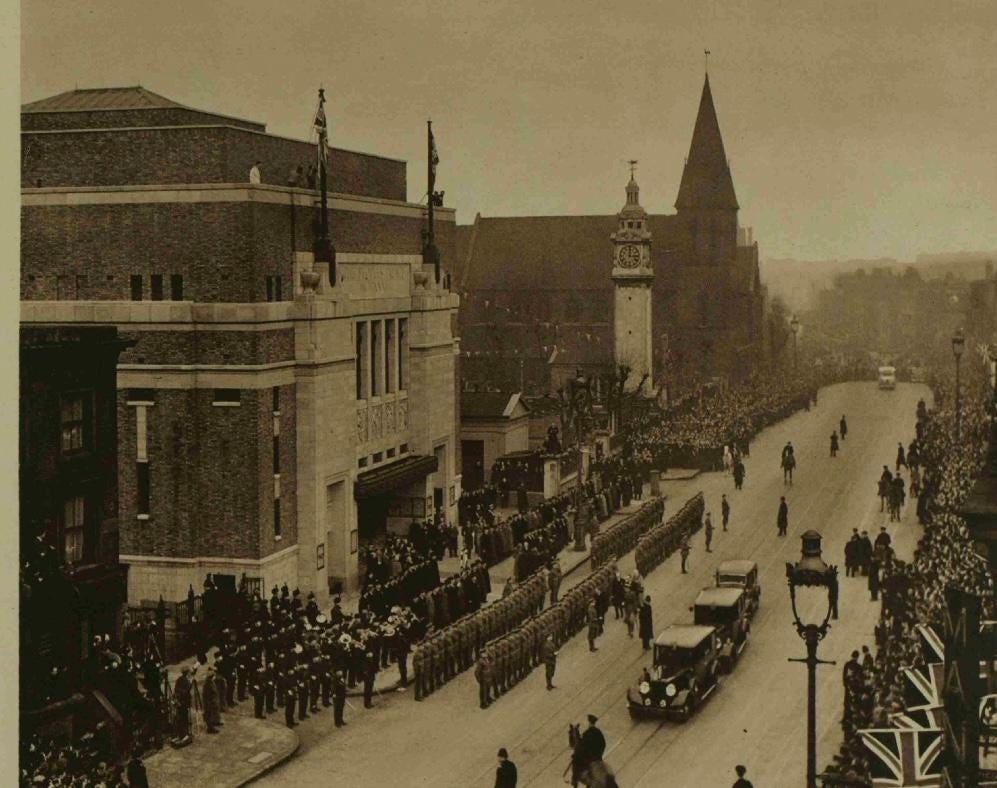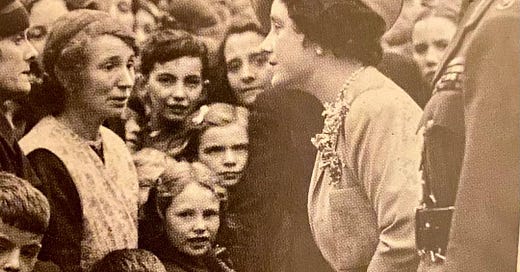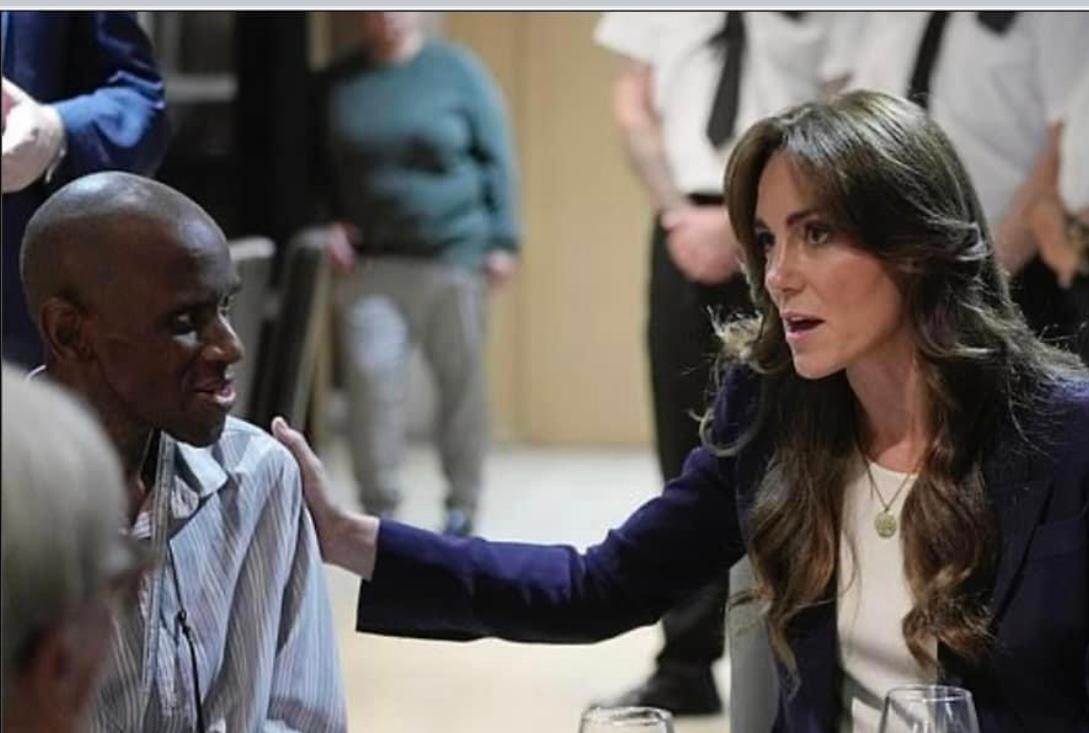How George VI and Elizabeth established a lasting rapport with ordinary people
Their visit to one of London’s poorest neighborhoods in February 1937 created a template for the monarchy today
One of my first posts for “Royals Extra,” last April 1st, was titled “The People’s King.” I described how from an early age the future King George VI had an uncommon ability to connect with people of all classes. Among the examples I mentioned was the first public engagement he and Queen Elizabeth carried out: a visit to the People’s Palace on Mile End Road in London’s East End that until now has gone little noticed by history.
I’d like to revisit that particular moment today, in part because it set the stage for the compassion and support the King and Queen showed during the Second World War with their repeated visits to victims of Nazi bombing in the poor neighborhoods of the East End and South of the Thames. On those occasions, crowds of people spontaneously erupted with the verses of the National Anthem, cheered the royal couple, and sang “There’ll always be an England.” During one East End wartime visit, George VI watched people removing their belongings from a damaged apartment house. “Are we downhearted?” a woman cried out. “No!” said her neighbors.
Connection and empathy
Those qualities of connection and empathy continued to be evident in the charitable work carried out for seventy years by Queen Elizabeth II and now by King Charles III and Queen Camilla, the Prince and Princess of Wales, and other senior members of the royal family. The philanthropic activities of what has been called the “welfare monarchy” are vital to its role in British society and make the most compelling case against replacing the constitutional monarchy with a republic headed by an elected—and possibly partisan—president.
When George VI’s older brother, King Edward VIII, abdicated the throne in December 1936 after less than a year to marry Wallis Simpson, the new King and Queen were initially rattled by their unexpected responsibilities— “like a blow to the head,” Elizabeth said. But she also told friends, “The curious thing is we are not afraid.”
The 41-year-old king and 36-year-old queen were fully prepared to carry out their commitment to duty and service. After their usual Christmas and New Year’s break at Sandringham, their home in Norfolk, they returned to London in early February and moved into Buckingham Palace.

Their first public engagement on February 13th was elaborately planned and highly symbolic, with public relations savvy that would comfortably fit into the 21st century royal family. In the words of The Times, the “drive across the capital city, from Buckingham Palace in the West to the People’s Palace in the East,” was meant to “show in action the link that binds the two palaces together.” They came not in carriages but in cars, arriving amid a surging crowd behind the main thoroughfare, the buildings along the way bedecked with Union flags and bunting.
Keep reading with a 7-day free trial
Subscribe to ROYALS EXTRA BY SALLY BEDELL SMITH to keep reading this post and get 7 days of free access to the full post archives.





